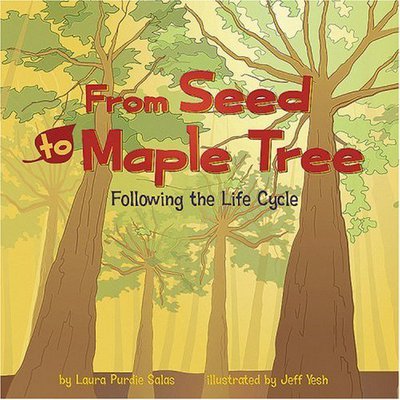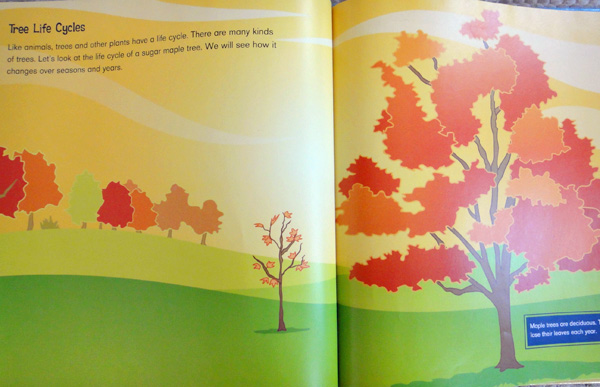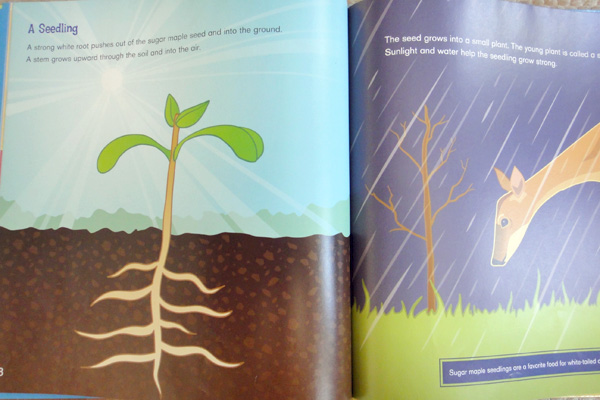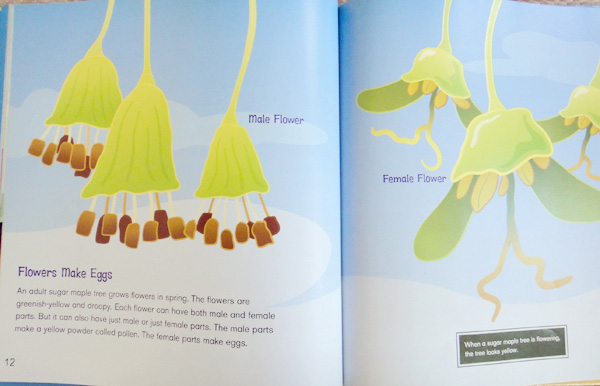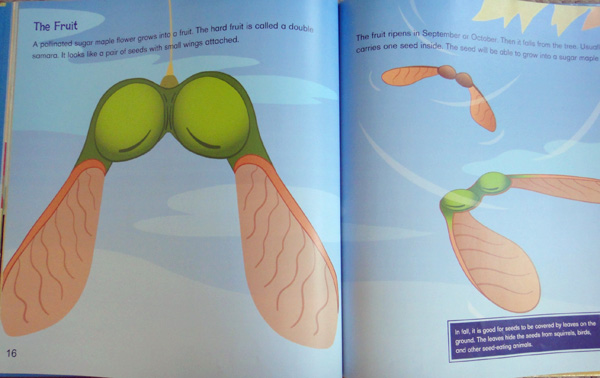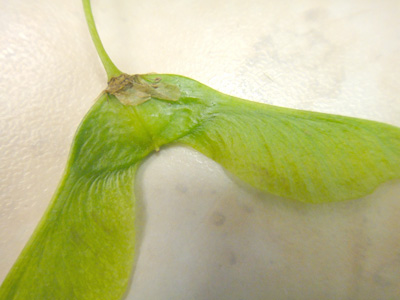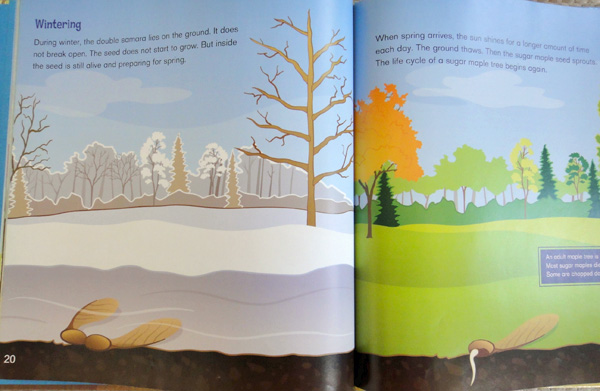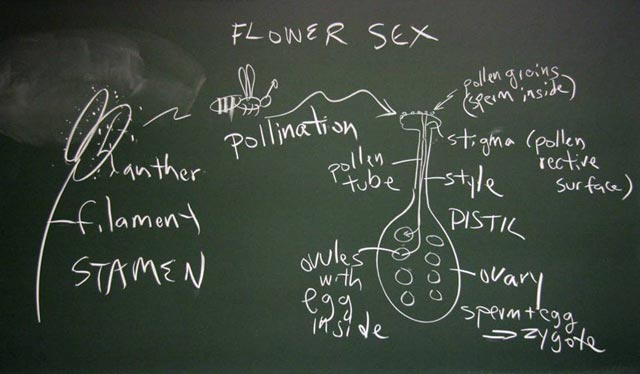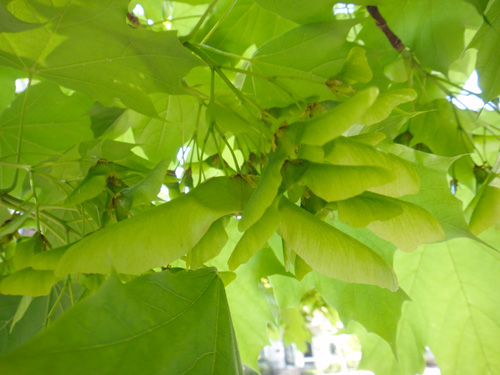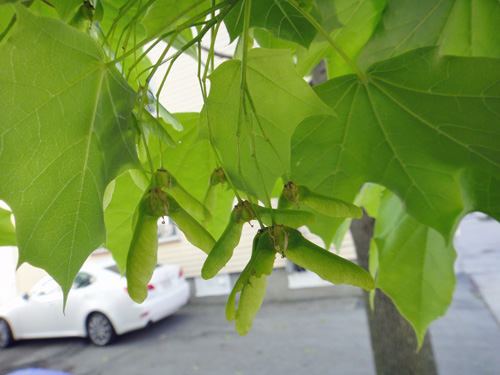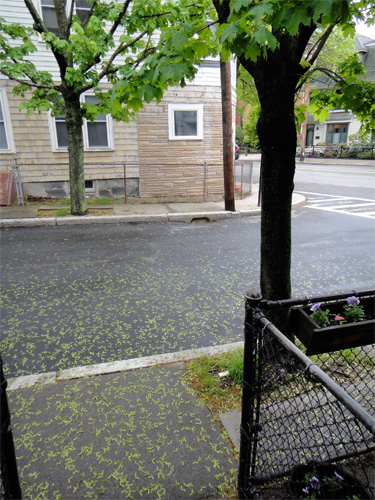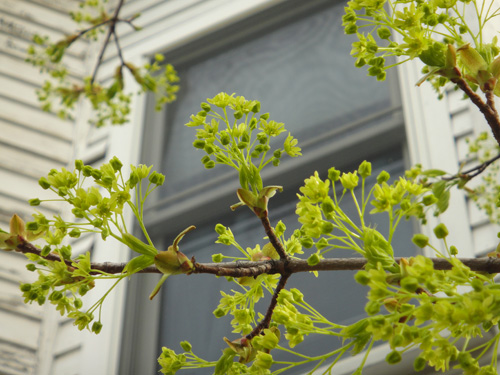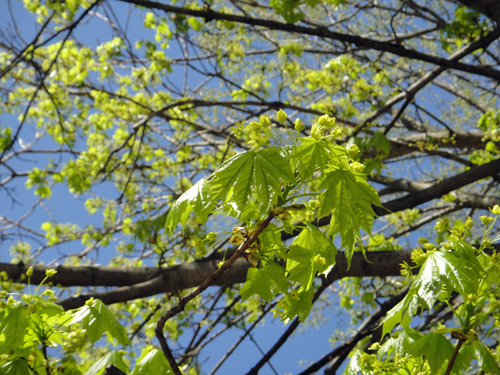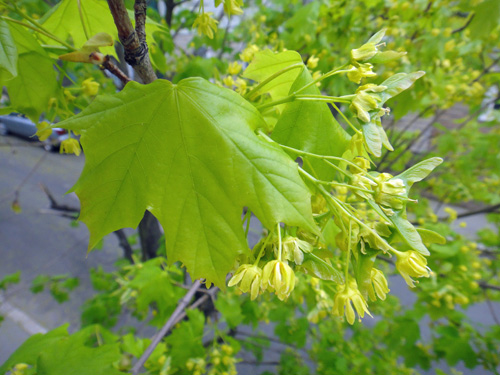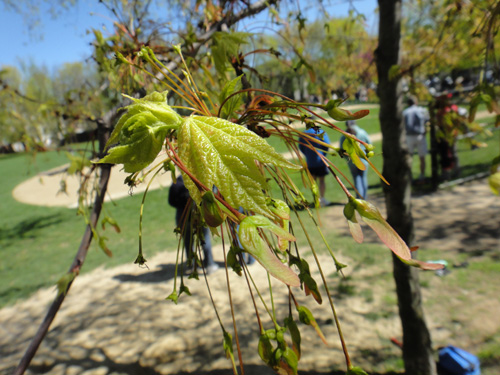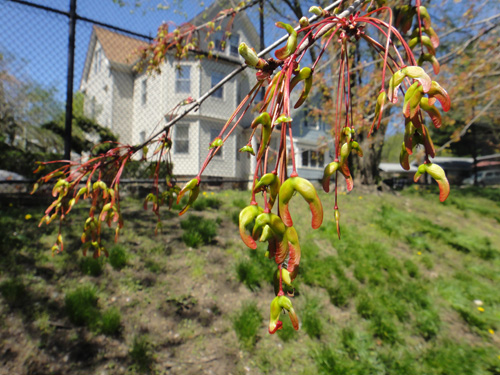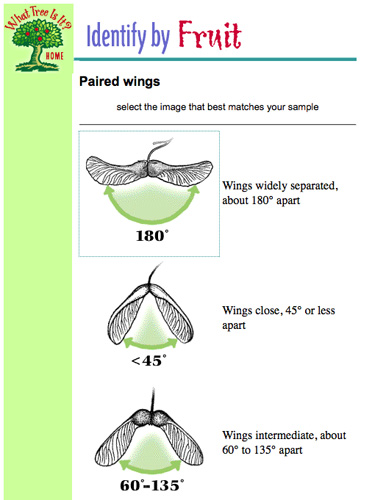As we know, my ash tree is a boy. He's made his pollen-y flowers and I'm guessing he's all done with his part in the flower-fruit-seed process. Since he doesn't have much to tell me about the other half of the process, I thought I'd take a walk down the street and visit the girl ash tree to see what she's up to.
When I last took some pictures of her flowers (on May 3rd), they looked like little green tadpoles - round head, skinny tail - with curly tongues coming out of them - which I assume was some female flower part reaching out to catch pollen.
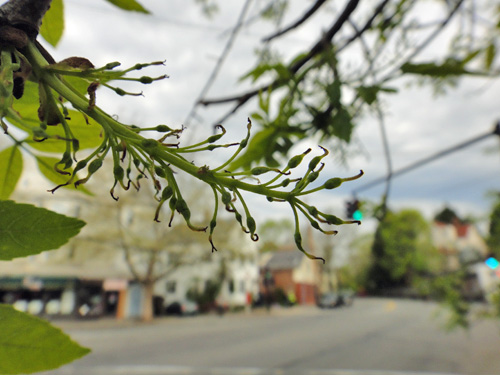
Two weeks later on the 17th, the female flowers looked like this:
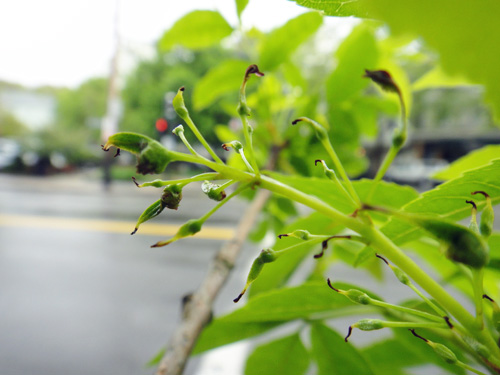
Some of those tadpole heads now have a single short green leaf growing out of them. Even the flowers on the bottom right of the picture look like they are starting to elongate, with a tiny leaf tip beginning to protrude from the circular head. I think the tadpole head is really the ovary of the flower and these new leaves are actually the fruit of the ash tree. I remember from the tree id book we looked at last month that the fruit of the ash tree is a single samara (the maple tree fruit is a double samara, so think half of one of those!).
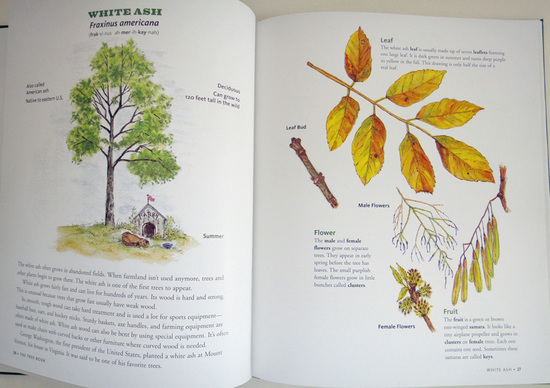
This looks about right. Long finger-like flowers (which frustratingly seem to be mislabeled here as the male flowers) develop into the long single-winged samaras. The book says, "It looks like a tiny airplane propeller and grows in clusters on female trees." Here are the propellers just four days later on May 21st:
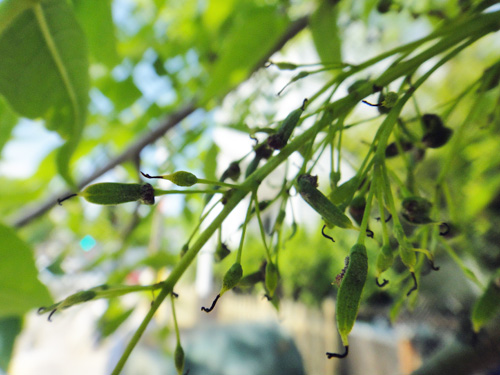
And some new ones starting to develop:
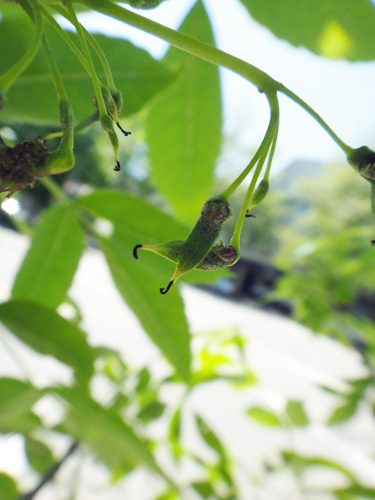
The close-up pictures reveal a sort of ugly, brown blob at the spot where the round head/ovary of the flower is swelling up. The fruit seems to be growing from the side or from under this. Here are some just breaking out of these brown shells.
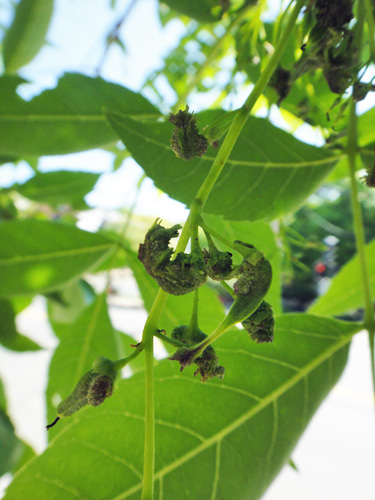
Ick, they're starting to look like bugs to me! I'm sorry to say this to my girlfriend ash tree, but whole bunches of these really are kind of nasty looking.
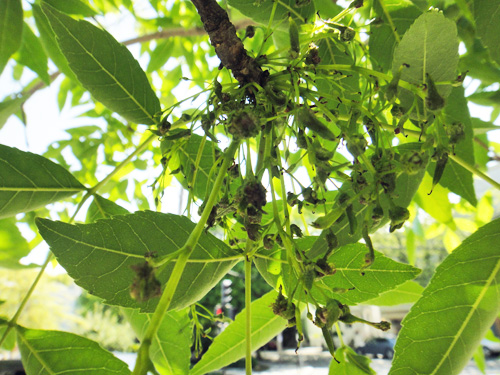
I hadn't expected fruit development to look so messy. At first, I thought there was some kind of dirt or gunk stuck on the flowers. Maybe it was the pollen? But the samaras in the top right of the picture look much cleaner and neater. I guess the flowers/fruit in the front are simply in that awkward tween stage.
When I last took some pictures of her flowers (on May 3rd), they looked like little green tadpoles - round head, skinny tail - with curly tongues coming out of them - which I assume was some female flower part reaching out to catch pollen.

Two weeks later on the 17th, the female flowers looked like this:

Some of those tadpole heads now have a single short green leaf growing out of them. Even the flowers on the bottom right of the picture look like they are starting to elongate, with a tiny leaf tip beginning to protrude from the circular head. I think the tadpole head is really the ovary of the flower and these new leaves are actually the fruit of the ash tree. I remember from the tree id book we looked at last month that the fruit of the ash tree is a single samara (the maple tree fruit is a double samara, so think half of one of those!).

This looks about right. Long finger-like flowers (which frustratingly seem to be mislabeled here as the male flowers) develop into the long single-winged samaras. The book says, "It looks like a tiny airplane propeller and grows in clusters on female trees." Here are the propellers just four days later on May 21st:

And some new ones starting to develop:

The close-up pictures reveal a sort of ugly, brown blob at the spot where the round head/ovary of the flower is swelling up. The fruit seems to be growing from the side or from under this. Here are some just breaking out of these brown shells.

Ick, they're starting to look like bugs to me! I'm sorry to say this to my girlfriend ash tree, but whole bunches of these really are kind of nasty looking.

I hadn't expected fruit development to look so messy. At first, I thought there was some kind of dirt or gunk stuck on the flowers. Maybe it was the pollen? But the samaras in the top right of the picture look much cleaner and neater. I guess the flowers/fruit in the front are simply in that awkward tween stage.
